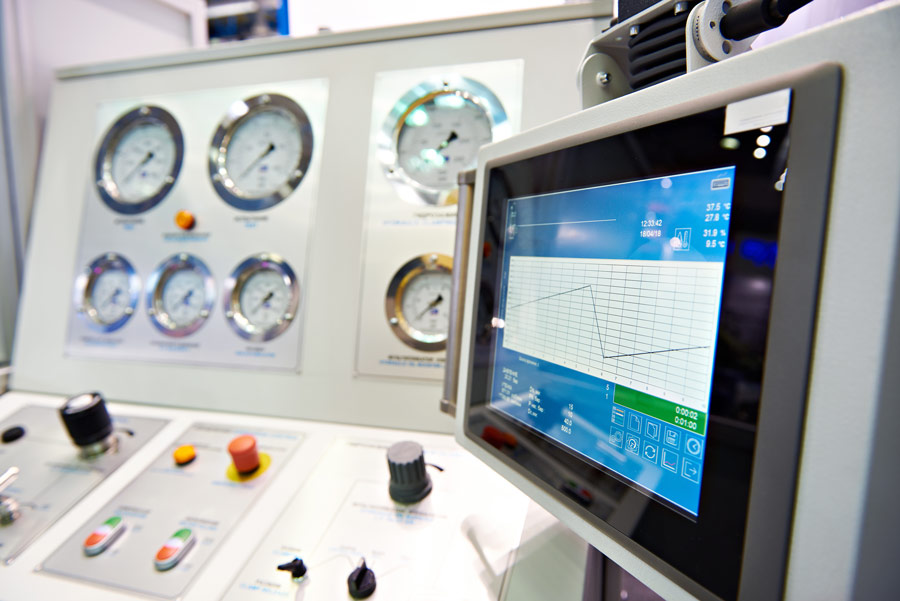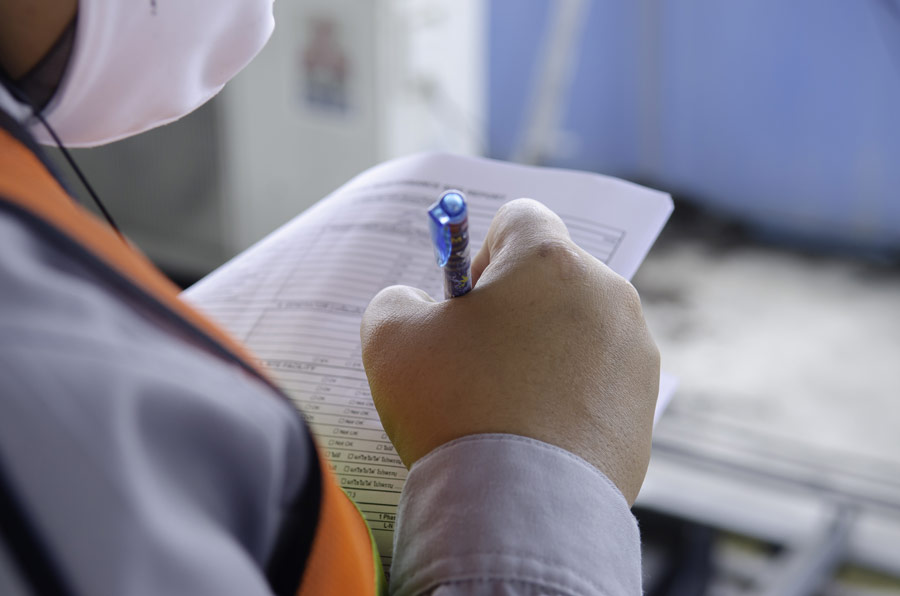UPDATE: AEP Issues June 18, 2021 Memo
On June 18, 2021, AEP released a memorandum which states that previous authorizations to deviate from the 1998 CEMS Code apply specifically to the 1998 Code. Affected sources should work with their approval coordinator to have any such deviation(s) authorized prior to January 1, 2022. The installation requirements specified in the 2021 CEM Code apply to new installations, “therefore existing authorizations to deviate which are based on physical installation requirements (i.e., sampling location) may remain.”
Here is a link to the Memorandum: https://open.alberta.ca/publications/continuous-emission-monitoring-system-cems-code
As we initially reported back in October 2020, the Alberta Environment and Parks (AEP) published a second draft of the 1998 Continuous Emission Monitoring System (CEMS) Code and hosted a webinar to provide information concerning the proposed revisions to the CEMS Code on October 13, 2020. A brochure summarizing the significant revisions to the CEMS code is available here. The revised Alberta CEMS code was finalized on April 7, 2021 and will take effect for the majority of the revisions on January 1, 2022.
UPDATE: On July 21, 2021, at 1 pm ET, VIM hosted the 2021 Alberta CEMS Code – What You Need to Know webinar. The webinar covered the significant changes in the 2021 Alberta CEMS code, how they may impact your current compliance plan. To request a recording for this webinar, please visit our PREVIOUS WEBINAR page.
This article highlights five key items we believe to be the most significant deviations from the first draft. Details on each item is provided below.
- Code Revisions Impacting Data Acquisition Systems (DAS)
- Major Component Replacement and Recertification
- Opacity Monitors
- Flowing Test Gas
- Annual CEMS and QAP Evaluation
1. Code Revisions Impacting Data Acquisition Systems (DAS)

One of the most critical components of your air compliance solution is an automated data acquisition system (DAS). The DAS is responsible for all data collection, validations, averaging, calculations, data substitution and emissions reporting.
There were several critical changes made to the 2021 CEMS Code that affect the programming of every DAS used for compliance. Some notable and obvious changes are how percent availability is calculated, new data substitution algorithms, or even the out-of-control criteria for analyzer drift. However, the revised CEMS Code includes other subtle changes that may affect programming such as the reporting of partial operating hours and temperature data, decimal precision to all performance specifications, and QA test deadlines.
2. Major Component Replacement and Recertification

The 2021 Code introduces new requirements associated with major and minor CEMS component replacement and repairs. One sees a flavor of USEPA’s 40 CFR Part 75 and the rule’s companion document, the Part 75 Emissions Monitoring Technical Q&As (formerly referred to the Part 75 Emissions Monitoring Policy Manual). More specifically, Question 12.10 of Technical Q&As defines USEPA’s diagnostic and recertification test requirements which AEP appears to have used as a guide. Question 12.10 identifies specific CEMS repairs and what follow-up recertification or diagnostic tests are required to demonstrate that the CEMS is collecting “quality-assured” data. Question 12.10 also specifies timelines for completing the required tests and allows the use of conditionally valid data procedures to minimize monitor downtime during the recertification or diagnostic event. In general, the conditionally valid data procedures specify that if all required diagnostic or recertification tests are successfully completed within the required timelines, then the conditionally valid data collected by the CEMS is deemed to be quality-assured data. Unfortunately, the CEMS Code did not include the conditionally valid data procedures.
The Code specifies that all recertification tests or other performance tests required following major CEMS changes to be completed no later than 90 days. During these events, the Code limits the use of the missing data estimation to 168 hours (1 week) per calendar month.
Section 8.0 (reference Section 8.0-A) does provide several alternate monitoring options for collecting emissions data when the primary CEMS or analyzer is unable to collect quality-assured data. One convenient alternate monitoring option is the use of a “like-kind” analyzer (another provision borrowed from 40 CFR Part 75). Like-kind is defined in Appendix A to the Code as “the same type analyzer or device as the primary which monitors the same parameter by the same measurement principle, make and model.” Consistent with Section 8.0-A, a CGA must be successfully completed on the like-kind analyzer no later than 168 hours of beginning operation. One would presume that this timeline is 168 unit operating hours versus 168 clock hours. AEP added the use of conditionally valid data procedures for a like-kind analyzer installations to Section 8 as noted below.
Once a CGA has been successfully passed, the data back to the initial successful zero and span test can be considered quality assured for reporting purposes up to maximum of 168 hours (the timescale to perform the CGA in 8.0-B). Any subsequent checks (i.e., daily zero and span test) following the initial drift check would also need to be within specifications as per 8.0-H for quality assured data.
Unlike Part 75, there is no time limit for using a like-kind analyzer (cold spare) to collect data, however any spare analyzer will need to complete a RATA according to a plan and schedule specified in the QAP (reference Section 8.0-C). The like-kind analyzer must meet the ongoing QA/QC requirements while in service. If the like-kind analyzer is not capable of performing a CGA, then a RATA must be conducted instead.
The affected source must submit an AMD notification to the Director within thirty (30) days following the completion of recertification testing. The notification shall contain (1) a summary of what changes were made to the CEMS to trigger recertification and (2) a list of any changes made to the original CEMS monitoring Plan. The QAP must include a discussion of the QA/QC procedures that will be performed following major and minor component repairs and replacements.
3. Opacity Monitors

Beginning January 1, 2022, any new opacity monitor must be installed and certified in accordance with Performance Specification 1 (PS-1) in Appendix B of 40 CFR Part 60. VIM cautions that Performance Specification 1 includes prescribed installation specifications that previous COMS installation may not have complied with. PS-1 requires that opacity monitor manufacturers meet the design and performance specifications detailed in ASTM D6216, Standards for Opacity Monitor Manufacturers to Certify Conformance With Design and Performance Specifications. Sources must obtain a certificate of conformance from the opacity monitor manufacturer certifying that the analyzer conforms to the requirements specified in ASTM-D626.
Effective January 1, 2022, affected sources equipped with in-stack opacity monitors must conduct a calibration error test once every calendar quarter. The first calibration error test would be required no later than March 30, 2022. Section 7.4 states that the calibration error test may be conducted using the procedures specified in PS-1 or Procedure 3 of Appendix F to 40 CFR Part 60. In general, the calibration error test procedures in PS-1 and Procedure 3 are identical with the exception that Procedure 3 only requires three non-consecutive filter drops of each of the three audit filters (attenuators) versus five non-consecutive drops of each filter required by PS-1. The audit filter values are based on the sources opacity limits and are defined in Section 7.5 of ASTM D6216.
In accordance with Section 7.4-B, the attenuators shall be recalibrated annually. This requirement can pose some logistical challenges. One must plan carefully to ensure that the audit filters can be shipped to be recalibrated and returned to site in a timely fashion in order to complete the subsequent test in the next calendar quarter. Some sources opt to purchase two sets of audit filters to ensure calibrated audit filters are available for each required test.
If the calibration error is determined to be greater than or equal to three percent (3%) opacity, the COMS data are considered to be out-of-control.
Although the calibration error test results are not reported to AEP, affected sources must maintain a record of these tests. Additionally, the QA/QC Plan must include procedures for conducting the quarterly test.
VIM also notes that Section 7.2-D states that an optical alignment test must be conducted “according to the manufacturer’s recommendations and the frequency outlined in the QAP.” Consistent with Procedure 3, an optical alignment check is required quarterly (i.e., every unit QA operating quarter).
4. Flowing Test Gas

There are several requirements concerning “flowing test gas” that become effective January 1, 2022. For new analyzers, the analyzer must be capable of using flowing test gas to conduct CGAs. The CGA is also referred to as a linearity check in several places throughout the Code. The source may not perform corrective maintenance, repairs replacements or adjustments to the CEMS 24 hours prior to or during each CGA. The unit must be combusting the primary fuel normal for the unit or producing the primary product normal for the unit during each CGA. The CGA shall be conducted using the three (3) calibration gas concentrations listed below.
- Low-level = 1-20% of full scale (versus 0-20% in the 1998 Code),
- Mid-level = 40-60% of full scale, and
- High-level = 80-100% of full scale.
In accordance with Section 6.2.2, CGAs must be conducted using EPA Protocol Gases. EPA Protocol Gas is defined in Appendix A of the Code (reference definition number 32). EPA Protocol Gases are typically much more expensive than other standard calibration gases. EPA Protocol Gases also require longer timelines to produce so be careful to keep an adequate inventory of your required calibration gas concentrations.
For existing analyzers that do not accommodate flow test gas, an alternate biannual audit must be conducted using a portable analyzer. The biannual audit must be conducted twice per year. The portable analyzer must be calibrated using EPA Protocol Gases (at low- and high-level) prior to starting the audit and after completing the audit. The audit must include a minimum of six (6) test runs (for a minimum of 6 paired sets of CEMS and portable analyzer data). The procedures used to conduct the audit must be included in the QA/QC Plan.
5. Annual CEMS and QAP Evaluation

Section 7.7 of the Code continues to require an annual evaluation of the CEMS and QAP. Annual evaluations should be scheduled as close as possible to twelve (12) months apart. Section 7.7 provides more detail, than previously listed in Section 5.3 of the 1998 Code, concerning the minimum components that must be covered in an annual audit. The annual audit report is not required to be submitted to the Director, although the Director may request a copy of the report. A summary of the audit findings must be included in the monthly or annual report specified in AMD Chapter 9.
Quality Assurance Plan (QAP) – Section 7.1 and Table 11 greatly expand the content requirements for QAP than previously specified in Section 5.0 of the 1998 Code. QAPs for existing CEMS must be updated no later than September 1, 2022, to comply with the 2021 Code.
Closing
VIM Technologies stands ready to help affected sources navigate the new 2021 CEMS Code requirements. VIM’s state-of-the-art DAS is fully equipped to comply with the new monitoring, recordkeeping requirements. In addition, VIM’s COMPAS group has over 125 years of combined CEMS and regulatory experience that can help with your Monitoring Plan, QA/QC Plan, Reporting & Regulatory Support, CEM Program Audits, Regulatory Training, and DAHS Tune-ups.
The January 1, 2022, compliance deadline is quickly approaching, so now is the time to act. If the 2021 Alberta CEMS Code requirements impact your facility and you want to learn more, CONTACT US today at sales@vimtechnologies.com to schedule a complimentary consultation.




